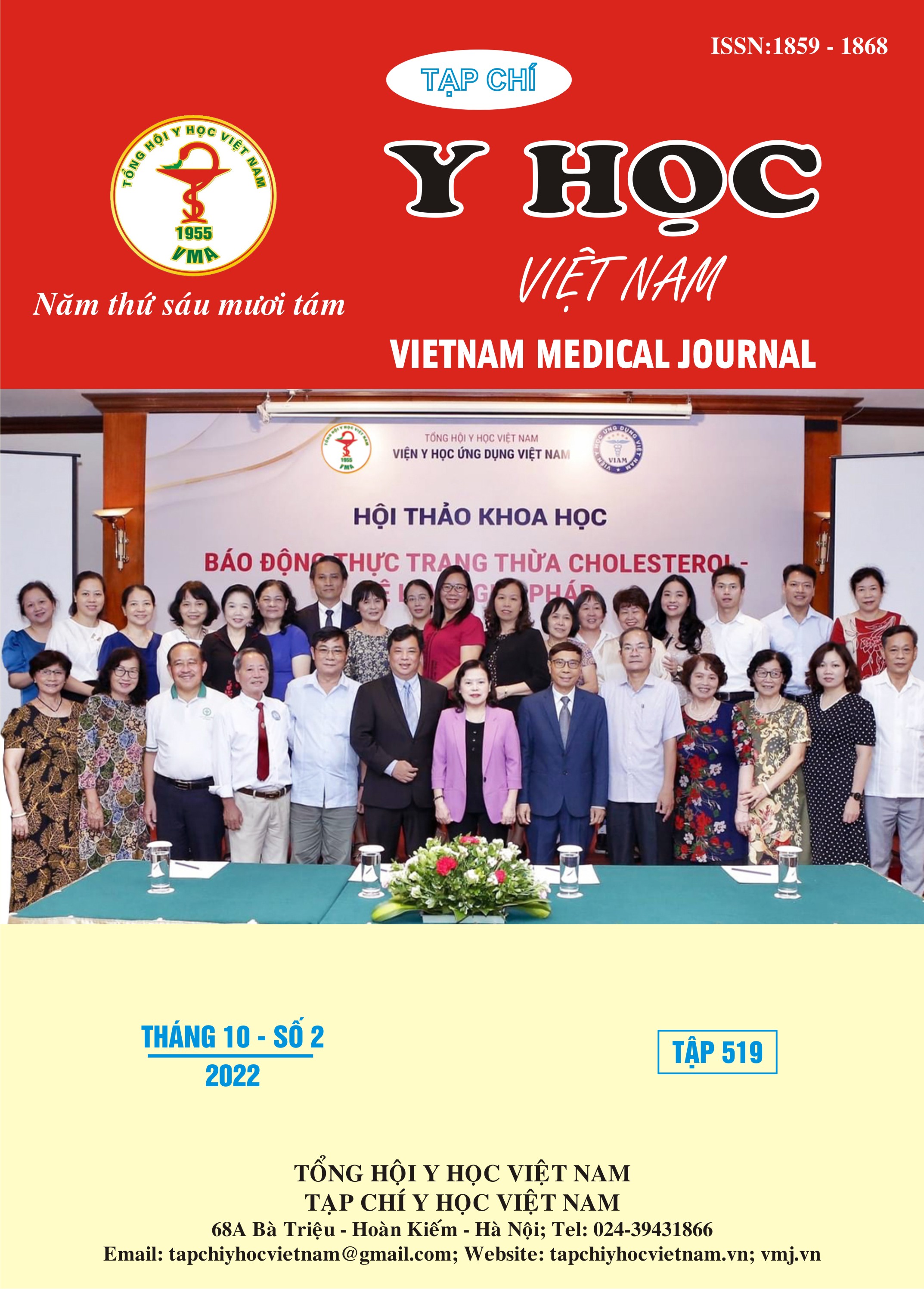SOME CLINICAL FACTORS OF THE LOWER WISDOM TOOTH IN THE GROUP FOR INDICATIONS FOR EXTRACT
Main Article Content
Abstract
Objectives: To describe the clinical characteristics of the lower wisdom teeth of patients with indications for extraction of RKHD when visiting the dental clinic at the Institute of Odonto-Stomatology and Hanoi Medical University Hospital in 2021-2022. Subjects and methods: the patient was assigned to extract RKHD at the Institute of Odonto-Stomatology and Hanoi Medical University Hospital. Cross-sectional descriptive study. Results: The percentage of women with RA problems was higher than that of men, accounting for 57.1%, the average age was 27 years old (27 ± 4.7) and the age group > 25 accounted for a high rate with 63.7% . The most common reason for going to the doctor was pain (44.2%). The boss beneficial status accounted for 61.1% of the total subjects. Bleeding gums accounted for 17.3% of the total subjects. The likelihood of pain in the group of 18-25 years old was 1.86 times higher than that of the group >25 years old (p < 0.05). The likelihood of tooth decay of the 18-25 year old group was 0.37 times lower than the caries risk of the age group > 25 years old (p < 0.05). Conclusion: The reason for swelling and pain in the lower wisdom teeth area accounts for the most proportion. The rate of deviated RKHD is higher in women than in men. The prevalence of risks and complications of RKHD increases with age.
Article Details
Keywords
Lower wisdom teeth, age of wisdom teeth eruption, complications of wisdom teeth, Impacted wisdom tooth
References
2. Krishnan B, Sheikh MHE, Rafa EG, Orafi H. Indications for removal of impacted mandibular third molars: a single institutional experience in Libya. J Maxillofac Oral Surg. 2009;8(3):246-248. doi:10.1007/s12663-009-0060-5
3. Alfadil L, Almajed E. Prevalence of impacted third molars and the reason for extraction in Saudi Arabia. The Saudi Dental Journal. 2020;32(5):262-268. doi:10.1016/j.sdentj.2020.01.002
4. Hashemipour MA, Tahmasbi-Arashlow M, Fahimi-Hanzaei F. Incidence of impacted mandibular and maxillary third molars: a radiographic study in a Southeast Iran population. Med Oral Patol Oral Cir Bucal. 2013;18(1):e140-145. doi:10.4317/medoral.18028
5. Chuang SK, Perrott DH, Susarla SM, Dodson TB. Age as a risk factor for third molar surgery complications. J Oral Maxillofac Surg. 2007;65(9):1685-1692. doi:10.1016/j.joms.2007.04.019
6. Mettes TDG, Ghaeminia H, Nienhuijs MEL, Perry J, van der Sanden WJM, Plasschaert A. Surgical removal versus retention for the management of asymptomatic impacted wisdom teeth. Cochrane Database Syst Rev. 2012;(6): CD003879. doi:10.1002/14651858.CD003879.pub3
7. Kandasamy S, Rinchuse DJ, Rinchuse DJ. The wisdom behind third molar extractions. Aust Dent J. 2009;54(4):284-292. doi:10.1111/j.1834-7819.2009.01152.x


